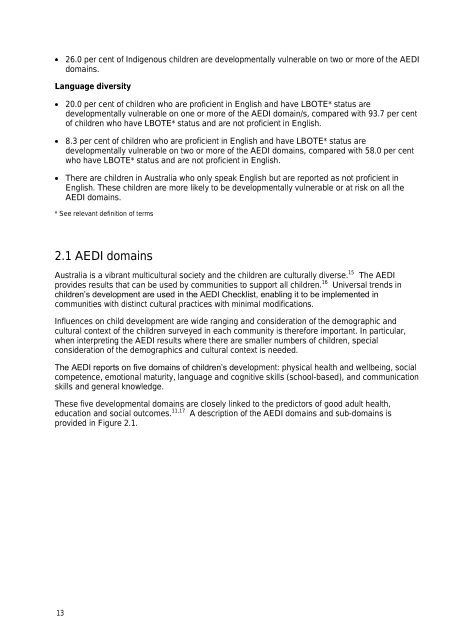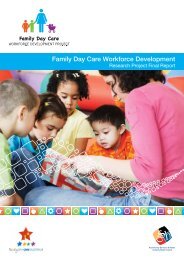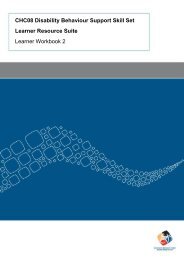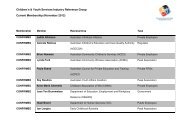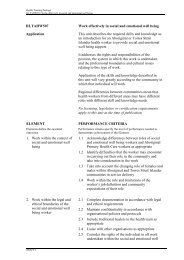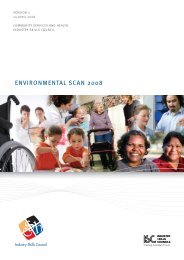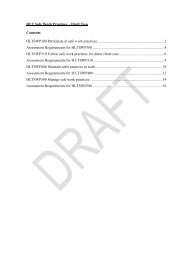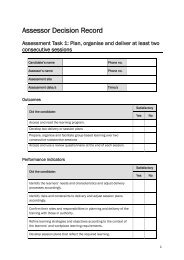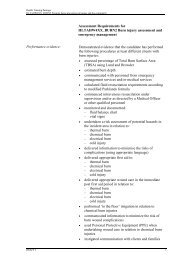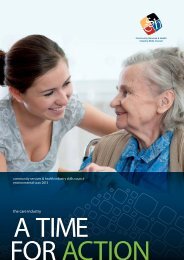A Snapshot of Early Childhood Development in Australia 2012
A Snapshot of Early Childhood Development in Australia 2012
A Snapshot of Early Childhood Development in Australia 2012
You also want an ePaper? Increase the reach of your titles
YUMPU automatically turns print PDFs into web optimized ePapers that Google loves.
26.0 per cent <strong>of</strong> Indigenous children are developmentally vulnerable on two or more <strong>of</strong> the AEDIdoma<strong>in</strong>s.Language diversity20.0 per cent <strong>of</strong> children who are pr<strong>of</strong>icient <strong>in</strong> English and have LBOTE* status aredevelopmentally vulnerable on one or more <strong>of</strong> the AEDI doma<strong>in</strong>/s, compared with 93.7 per cent<strong>of</strong> children who have LBOTE* status and are not pr<strong>of</strong>icient <strong>in</strong> English.8.3 per cent <strong>of</strong> children who are pr<strong>of</strong>icient <strong>in</strong> English and have LBOTE* status aredevelopmentally vulnerable on two or more <strong>of</strong> the AEDI doma<strong>in</strong>s, compared with 58.0 per centwho have LBOTE* status and are not pr<strong>of</strong>icient <strong>in</strong> English.There are children <strong>in</strong> <strong>Australia</strong> who only speak English but are reported as not pr<strong>of</strong>icient <strong>in</strong>English. These children are more likely to be developmentally vulnerable or at risk on all theAEDI doma<strong>in</strong>s.* See relevant def<strong>in</strong>ition <strong>of</strong> terms2.1 AEDI doma<strong>in</strong>s<strong>Australia</strong> is a vibrant multicultural society and the children are culturally diverse. 15 The AEDIprovides results that can be used by communities to support all children. 16 Universal trends <strong>in</strong>childrens development are used <strong>in</strong> the AEDI Checklist, enabl<strong>in</strong>g it to be implemented <strong>in</strong>communities with dist<strong>in</strong>ct cultural practices with m<strong>in</strong>imal modifications.Influences on child development are wide rang<strong>in</strong>g and consideration <strong>of</strong> the demographic andcultural context <strong>of</strong> the children surveyed <strong>in</strong> each community is therefore important. In particular,when <strong>in</strong>terpret<strong>in</strong>g the AEDI results where there are smaller numbers <strong>of</strong> children, specialconsideration <strong>of</strong> the demographics and cultural context is needed.The AEDI reports on five doma<strong>in</strong>s <strong>of</strong> childrens development: physical health and wellbe<strong>in</strong>g, socialcompetence, emotional maturity, language and cognitive skills (school-based), and communicationskills and general knowledge.These five developmental doma<strong>in</strong>s are closely l<strong>in</strong>ked to the predictors <strong>of</strong> good adult health,education and social outcomes. 11,17 A description <strong>of</strong> the AEDI doma<strong>in</strong>s and sub-doma<strong>in</strong>s isprovided <strong>in</strong> Figure 2.1.13


